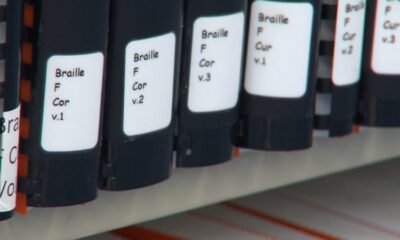Science
Florida Hospital Enhances Lung Cancer Care with Robotics

A hospital in Bay County, Florida, is revolutionizing lung cancer detection and treatment through advanced robotic technology. Ascension Sacred Heart Bay in Panama City has implemented the Ion Robotic-assisted Bronchoscopy system and Endo-Bronchial Ultrasound Technology, providing a minimally invasive option for patients requiring biopsy procedures for lung nodules.
The introduction of these technologies marks a significant step forward in the fight against lung cancer. Traditionally, obtaining biopsies from lung nodules could require invasive surgery, posing risks and complications. The Ion Robotic-assisted Bronchoscopy system allows physicians to perform these procedures with enhanced precision and safety, reducing recovery time for patients.
Benefits of Robotic Technology in Lung Cancer Treatment
The benefits of this robotic technology are manifold. According to Dr. John Smith, a pulmonologist at Ascension Sacred Heart Bay, the system provides real-time imaging and access to difficult-to-reach nodules. “This technology allows us to visualize the lungs in a way that was not possible before,” Dr. Smith stated. “We can now perform biopsies with less discomfort and a quicker recovery while ensuring greater diagnostic accuracy.”
Patients diagnosed with lung nodules can often experience anxiety and uncertainty. The minimally invasive nature of the Ion system reduces the physical and emotional toll of treatment. With a quicker recovery period, patients can return to their normal lives sooner, an essential factor in overall care.
Future of Lung Cancer Care
The integration of robotic systems into lung cancer treatment is part of a broader trend in healthcare focused on enhancing patient outcomes through innovative technology. As hospitals like Ascension Sacred Heart Bay adopt these advanced tools, experts believe that more patients will benefit from early detection and treatment of lung cancer.
The advancements in technology not only improve diagnosis but also have the potential to lower healthcare costs associated with more invasive procedures. By streamlining the biopsy process, hospitals can allocate resources more effectively, ultimately benefiting both patients and healthcare providers.
With lung cancer being one of the leading causes of cancer-related deaths worldwide, the role of such innovative technologies is increasingly vital. As of 2023, hospitals across the globe are exploring similar robotic solutions, aiming to improve patient care and outcomes significantly.
As Ascension Sacred Heart Bay continues to lead in the adoption of cutting-edge technologies, it sets a precedent for other medical facilities. The commitment to providing state-of-the-art care showcases the potential of robotics in transforming how lung cancer is diagnosed and treated, offering hope and improved quality of life for countless patients.
-

 Technology4 months ago
Technology4 months agoDiscover the Top 10 Calorie Counting Apps of 2025
-

 Health2 months ago
Health2 months agoBella Hadid Shares Health Update After Treatment for Lyme Disease
-

 Health3 months ago
Health3 months agoErin Bates Shares Recovery Update Following Sepsis Complications
-

 Technology3 weeks ago
Technology3 weeks agoDiscover 2025’s Top GPUs for Exceptional 4K Gaming Performance
-

 Technology2 months ago
Technology2 months agoElectric Moto Influencer Surronster Arrested in Tijuana
-

 Technology4 months ago
Technology4 months agoDiscover How to Reverse Image Search Using ChatGPT Effortlessly
-

 Technology4 months ago
Technology4 months agoMeta Initiates $60B AI Data Center Expansion, Starting in Ohio
-

 Technology4 months ago
Technology4 months agoRecovering a Suspended TikTok Account: A Step-by-Step Guide
-

 Health4 months ago
Health4 months agoTested: Rab Firewall Mountain Jacket Survives Harsh Conditions
-

 Lifestyle4 months ago
Lifestyle4 months agoBelton Family Reunites After Daughter Survives Hill Country Floods
-

 Technology3 months ago
Technology3 months agoUncovering the Top Five Most Challenging Motorcycles to Ride
-

 Technology4 weeks ago
Technology4 weeks agoDiscover the Best Wireless Earbuds for Every Lifestyle





















